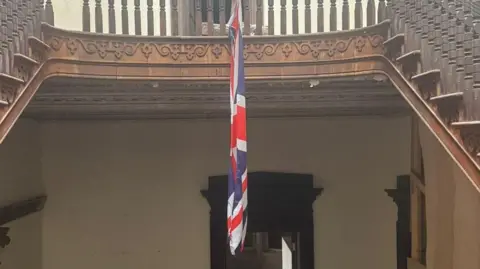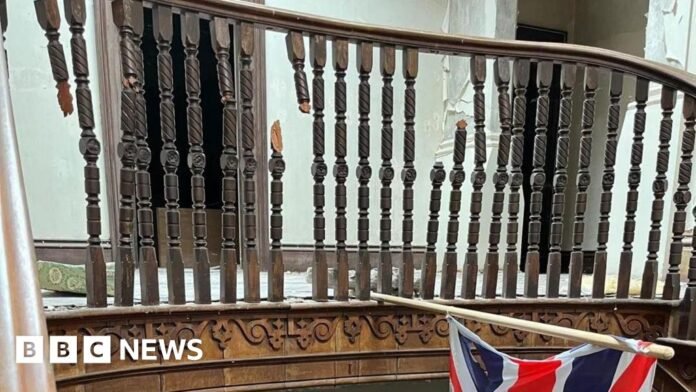 The Somme Association
The Somme AssociationThe director of Craigavon House has said reports of vandalism at the historic site are “extremely disappointing”.
A former home of Northern Ireland’s first Prime Minister, Sir James Craig, the house was built on the Holywood Road in the 1880s.
The Somme Association, who now manage the historic site, said a “malicious and destructive act of vandalism” has taken place at the property.
Carol Walker said vandals “broke in and intentionally destroyed the beautifully crafted 150-year-old spindles on the double return staircase”.
She added that they then “removed some of the original ornate cornice to use as a weight for the Union flag that they ironically erected”.
The Somme Association made an appeal “to anyone who works with the youth of east Belfast to please educate them on the significance of this historic house and to encourage them to stop this wilful destruction”.
TUV Councillor Matthew Warrick said Craigavon House “deserves better”.
“Craigavon House is not just a building,” he continued.
“It is a symbol of Ulster’s contribution to history, and it deserves better than this – better than vandalism, and better than neglect.”
 The Somme Association
The Somme AssociationWhat is Craigavon House?
Craigavon House was built for Sir James Craig’s father, James Craig senior and was designed by the Waterford-born architect Thomas Jackson.
The house was the backdrop for the reading of the Ulster Solemn League and Covenant by former unionist leader Edward Carson in 1912.
The lawns at the front of the house were used as a location for anti-Home Rule rallies and during the formation of the Ulster Volunteer Force in 1913.
In 1917, it was opened as a hospital for those sick and injured in the the First World War.





